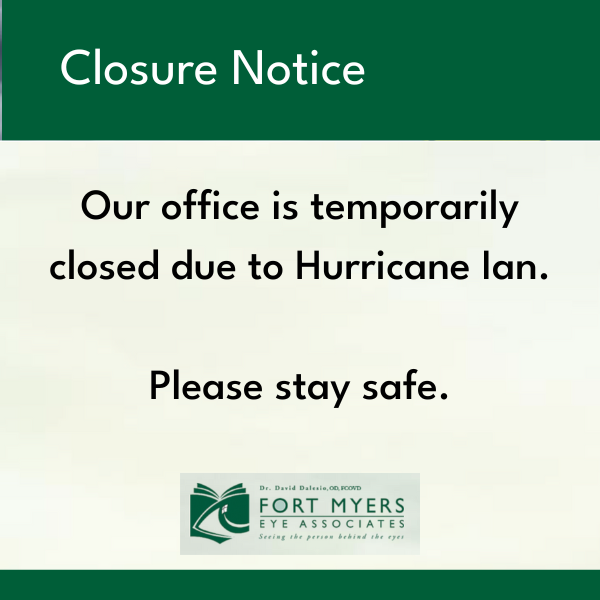You may have heard it called nearsightedness or myopia, but it’s a common condition that makes it difficult for people to see objects clearly at a distance. Nearsightedness is usually diagnosed during a child’s eye exam, as it typically develops during these early years. However, it can also occur later in life, typically due to visual stress.
Nearsightedness can have a significant impact on a child’s development. It can affect their learning and success in academics and extracurriculars. Since it progresses, these problems may only get worse if left untreated. Fortunately, myopia control is available.
Eyeglasses and contacts can correct blurry vision caused by myopia. A single-vision lens can correct vision, but more severe cases of nearsightedness might require bifocal or progressive lenses instead. If you have a small prescription, you may only need to wear your glasses sometimes.
What Is Nearsightedness?
Nearsightedness is an eye condition known as a refractive error. To provide vision, light passes through the clear dome at the front of your eye (the cornea) and lens. These 2 parts work together to focus the light on the retina at the back of the eye.
An eye with myopia, however, has grown too long too quickly, or the cornea is too curved. As a result, it takes on more of an oval shape, and the light can no longer focus on the retina. Instead, it focuses in front of the retina, causing faraway objects to appear blurry.
Myopia puts your child at risk of more than just blurry vision. High myopia can increase the risk for vision problems later in life, such as:
- Cataracts
- Glaucoma
- Myopic macular degeneration
- Retinal detachment
There are a variety of methods that can help control myopia’s progression, slowing or even halting it. However, any damage nearsightedness causes to the eye cannot be reversed, so the earlier treatment starts, the less myopia your child could have as an adult.
What Causes Nearsightedness?
The exact cause of myopia is currently unknown. It is thought to be hereditary, but it can also develop later in life due to stress on the eyes. This stress can include close work, concentrated reading, or prolonged screen time. High levels of screen time, such as staring at a mobile device, has been linked to a 30% higher risk of myopia. This risk increases to 80% when factoring in computer screen time as well.
Risk factors that may increase your likelihood of developing nearsightedness include:
- A family history of myopia
- Excessive amounts of close-up work
- Not spending enough time outside
- Too much screen time
- Diabetes
Signs & Symptoms of Nearsightedness
It can be challenging for your child to know if they’re nearsighted since they may not be aware their vision could be clearer. This difficulty can be the same for adults whose vision changes very slowly; they might only notice when they have difficulty seeing the TV screen, reading faraway text, or driving.
Some signs a person might notice that could indicate nearsightedness include:
- Difficulty seeing TV screens
- Headaches
- Eye strain
Keep an eye out for any signs that your child might be nearsighted, such as:
- Holding books close to their face to read
- Sitting too close to TV screens
- Struggling to read the board at school
- Persistent squinting
- Rubbing their eyes
How Is Nearsightedness Treated?
Several treatments can correct nearsightedness or control its progression.
Ortho-K
Ortho-k, known medically as orthokeratology, uses rigid gas-permeable lenses to reshape your eye as you sleep. This gentle reshaping corrects nearsightedness temporarily, preventing the need to wear glasses or contact lenses during the day.
This method requires a level of discipline, as you’ll have to wear the lenses every night to prevent your eyes from returning to their previous shape.
Ortho-k lenses offer many advantages. With nightly wear, you’ll have the freedom from daily contact lenses or glasses to see life clearly during daily activities such as swimming and playing sports. Say goodbye to foggy glasses!
Soft Myopia Management Contact Lenses
Specially designed multifocal soft contact lenses, such as MiSight or NaturalVue, can slow the progression of myopia. These FDA-approved lenses have been shown to be effective in preventing myopia from worsening when used at a young age.
Daily disposable soft contact lenses for myopia management are effective and easy because they are worn once, then discarded.
Atropine Eye Drops
Atropine drops are typically used in eye exams to help dilate your pupils so your optometrist can better see the inside of your eye. At a low dose, optometrists can use atropine drops to manage myopia in children. This method is helpful for children too young to wear contact lenses, and it can be used in combination with ortho-k or soft lenses.
Glasses or Contact Lenses
Single-vision eyeglasses or contact lenses are a common choice for correcting nearsightedness. However, regular lenses aren’t able to slow myopia’s progression.
If your child is presenting signs of myopia, visit Fort Myers Eye Associates for a comprehensive assessment to determine what myopia management method is right for their vision and lifestyle.
Vision Therapy
In some cases, stress can cause myopia. Vision therapy is an option for people with stress-related myopia as they can struggle with eye focusing. A personalized program can help train the visual system and brain-eye connection to work together efficiently, improving focusing ability.
What About Laser Eye Surgery?
Laser eye surgeries, such as LASIK, can correct myopia to an extent by reshaping the cornea. Still, they cannot undo the damage done to the retina due to the eyeball growing too long. This damage could still leave you or your child at a high risk of retina detachment and myopic macular degeneration as they age.
The best choice is to control myopia while it’s still developing, as once the damage is done, it’s irreversible.
How Is Nearsightedness Diagnosed?
The best thing you can do for your child’s vision is to get regular eye exams. Children should have their first eye exam at 6 months, with another just before school starts between 2–5 years old. They should then have an eye exam every year until they reach adulthood. This way, their optometrist can track eye growth and detect vision problems early.
You have the power to ensure your child has clear vision into their adulthood. Unfortunately, proper treatment can’t reverse nearsightedness but can slow it.
If you want to learn more about the kind of myopia management options Fort Myers Eye Associates offers, book a children’s eye exam today!





